Gunter Van Craen - CDIO at Bekaert - Embracing Digital Transformation
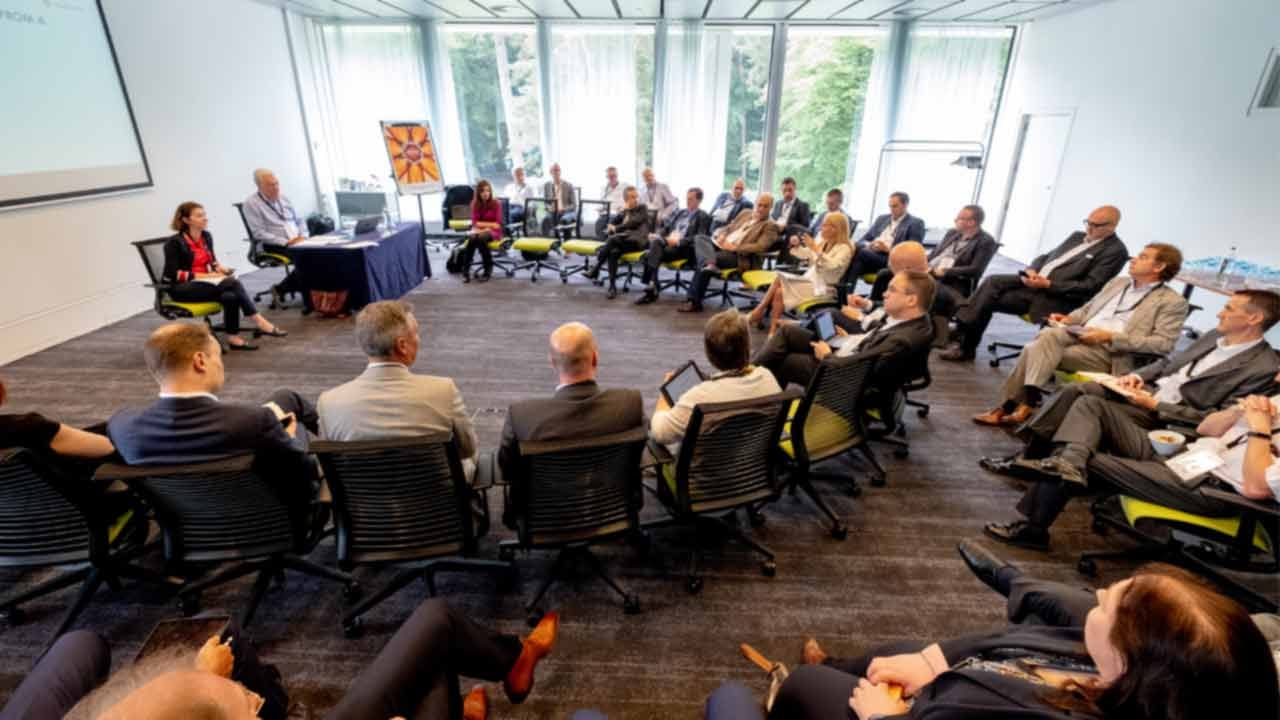
Find out more:
.png)
Poland 5-12-25 Invitation Only Physical Polish
Liderzy biznesowi pokładają ogromne nadzieje w agentach AI, widząc w nich szansę na zbudowanie przewagi konkurencyjnej. Rzadko jednak pada zasadnicze pytanie: czy cyfrowy fundament organizacji – dane, integracje, systemy – jest na to gotowy? Czy obecna strategia integracji wspiera ambicje biznesowe, czy je spowalnia? Podczas naszego biznesowego śniadania CIONET, organizowanego we współpracy z Digia (Finlandia) i Savangard, przyjrzymy się trendom, które dziś definiują architekturę i integracje w Europie i w Polsce. W gronie ok. 20 liderów IT porozmawiamy m.in. o tym: Czy strategia integracji danych i aplikacji powinna uwzględniać przyszłe zastosowania AI? Jak przekształcić kluczowe dane w powtarzalne „data products”, które przyspieszają dostarczanie wartości biznesowej? W jakim kierunku ewoluują platformy integracyjne – iPaaS i API Management? Cloudification - jakie lekcje wynoszą firmy, które przeszły takie transformacje z legacy do nowoczesnej integracji w chmurze? Jak zorganizować „integration core team”, który wzmacnia rozproszone i coraz bardziej niezależne zespoły technologiczne? Spotkanie odbędzie się w kameralnej atmosferze Centrum Praskiego Koneser (CHPTR) i będzie prowadzone w formule dyskusyjnej – z myślą o praktykach zajmujących się modernizacją architektury, integracją systemów i przygotowaniem IT na kolejne lata.
Read More.png)
Poland 8-12-25 Invitation Only Physical Polish
W wielu firmach monitoring wydaje się działać poprawnie, dopóki nie spojrzymy na to, czego nie widać: luki między narzędziami, brak wspólnego obrazu usług, opóźnienia między zdarzeniem a decyzją. W takiej sytuacji trudno wcześnie wykryć degradację, oszacować wpływ incydentów na klientów czy przewidzieć ryzyka, które uderzają w biznes, zanim IT zdąży zareagować. Podczas CIONET Executive Roundtable, którego partnerem jest Spluk, porozmawiamy o tym, ile organizacje tracą na rozproszonym monitoringu i jak wiele można zyskać, gdy staje się on spójnym systemem, a nie zbiorem narzędzi. Zastanowimy się, jak połączyć dane z aplikacji, infrastruktury i biznesu w jeden obraz, który realnie wspiera szybkość reakcji, stabilność usług i jakość decyzji.
Read More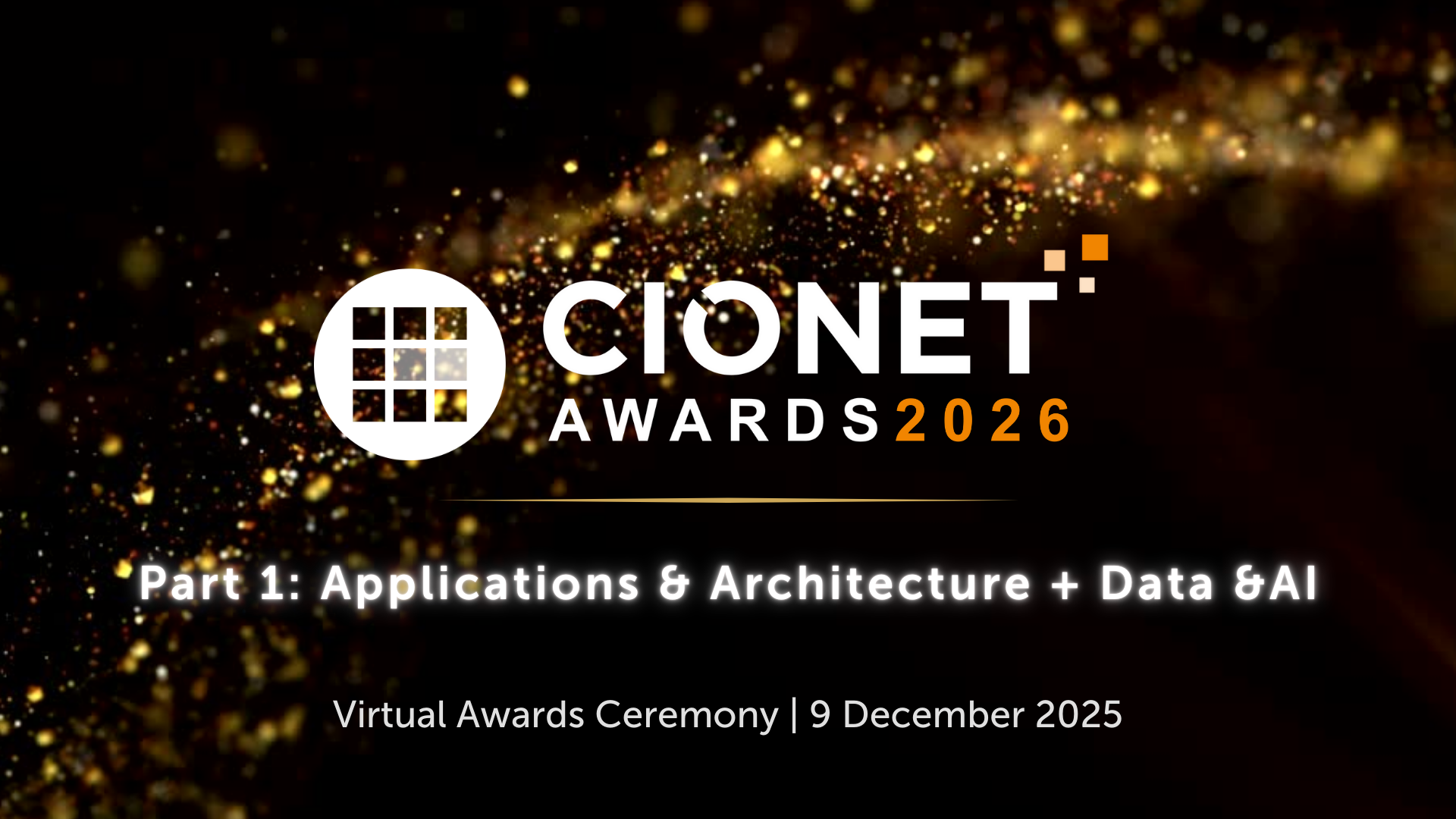
International 9-12-25 Public Virtual english
The CIONET Awards 2026: Part 1, the premier celebration of excellence in digital mission and leadership. During this event the spotlight falls on two of the most critical arenas in modern enterprise: Applications & Architecture and Data & AI. Prepare for a dynamic session where each nominee will present their groundbreaking achievements.
Read More.png)
Brazil 9-12-25 Country Members Physical portuguese
Cerimônia de Premiação CIONET BRASIL 2025.Reconheceremos as Empresas Líderes em Excelência Tecnológica em Projetos e os Líderes Digitais do Ano 2025.Quando?09 de Dezembro de 2025A partir das 18:30Onde?Sheraton São Paulo WTC HotelInscrições online: https://www.cionet.com/pt-br/events/pr%C3%AAmios-cionet-brasil-2025
Read More
Netherlands 9-12-25 Invitation Only english
At this exclusive CIONET Executive Roundtable, hosted in partnership with It’s Value, we will explore how Technology Business Management (TBM) principles can help CIOs and IT leaders make data-driven financial decisions that drive measurable business value.
Read MoreNetherlands 9-12-25 Invitation Only Physical english
Digital transformation and ongoing economic uncertainty are intensifying the pressure on IT leaders to do more with less. In this environment, gaining precise control over IT costs—while continuing to deliver effective, efficient, and innovative technology operations—is more critical than ever. At this exclusive CIONET Executive Roundtable, hosted in partnership with It’s Value, we will explore how Technology Business Management (TBM) principles can help CIOs and IT leaders make data-driven financial decisions that drive measurable business value. Key Discussion Themes Turning data insights into smarter IT investment decisions Setting priorities for cost optimisation and maximising ROI Quantifying and communicating the business value of IT initiatives Evaluating the principles of FinOps and the implications of public, private, and hybrid cloud environments for cost management Embedding effective change management to drive adoption and alignment Achieving tangible business outcomes from AI initiatives while maintaining fiscal discipline The evening will also feature a fireside chat with Sunil Anand, Global Head of Technology Business Management at National Grid. Sunil will share practical lessons and key milestones, retracing the National Grid cost management journey. This dinner offers a unique opportunity to: Exchange experiences with peers facing similar challenges Gain insights from TBM experts and industry practitioners Reassess your own IT financial strategy in a relaxed, collegial setting Join us for an evening of insight, discussion, and connection—designed to help you strengthen IT’s role as a true business value driver.
Read More.jpg)
Belgium Dec 4, 2025 Invitation Only Physical english
CIONET is committed to highlighting and celebrating female role models in IT, Tech & Digital, creating a leadership programme that empowers and elevates women within the tech industry. This initiative is dedicated to showcasing the achievements and successes of leading women, fostering an environment where female role models are recognised, and their contributions can ignite progress and inspire the next generation of women in IT.
Read More.png)
International Dec 9, 2025 Public Virtual english
The CIONET Awards 2026: Part 1, the premier celebration of excellence in digital mission and leadership. During this event the spotlight falls on two of the most critical arenas in modern enterprise: Applications & Architecture and Data & AI. Prepare for a dynamic session where each nominee will present their groundbreaking achievements.
Read More
Netherlands Dec 9, 2025 Invitation Only Physical english
Digital transformation and ongoing economic uncertainty are intensifying the pressure on IT leaders to do more with less. In this environment, gaining precise control over IT costs—while continuing to deliver effective, efficient, and innovative technology operations—is more critical than ever. At this exclusive CIONET Executive Roundtable, hosted in partnership with It’s Value, we will explore how Technology Business Management (TBM) principles can help CIOs and IT leaders make data-driven financial decisions that drive measurable business value. Key Discussion Themes Turning data insights into smarter IT investment decisions Setting priorities for cost optimisation and maximising ROI Quantifying and communicating the business value of IT initiatives Evaluating the principles of FinOps and the implications of public, private, and hybrid cloud environments for cost management Embedding effective change management to drive adoption and alignment Achieving tangible business outcomes from AI initiatives while maintaining fiscal discipline The evening will also feature a fireside chat with Sunil Anand, Global Head of Technology Business Management at National Grid. Sunil will share practical lessons and key milestones, retracing the National Grid cost management journey. This dinner offers a unique opportunity to: Exchange experiences with peers facing similar challenges Gain insights from TBM experts and industry practitioners Reassess your own IT financial strategy in a relaxed, collegial setting Join us for an evening of insight, discussion, and connection—designed to help you strengthen IT’s role as a true business value driver.
Read More.jpg)
Italy Dec 10, 2025 Invitation Only Physical italian
Questa roundtable esclusiva offrirà a CIO, CISO e Leader di ITOps/Engineering un confronto diretto per individuare le migliori strategie di Innovazione che, attraverso l'observability, ottimizzino il Return of Investment.
Read More.jpg)
Belgium Dec 11, 2025 Country Members Physical english
Imagine being able to monitor, simulate, and optimise an entire city, factory, or supply chain in real time. Next-generation digital twins are making this vision a reality, transforming how we manage and understand complex systems. By creating dynamic virtual replicas of physical assets and processes, digital twins allow organisations to predict issues, optimize performance, and make data-driven decisions with unprecedented accuracy.This event will explore how digital twins are being used across industries to revolutionize the way we operate and maintain large-scale, intricate systems—whether it’s the infrastructure of a smart city, the efficiency of a factory floor, or the resilience of global supply chains.Examples of Digital Twins in Action:Smart Cities: Urban planners can use digital twins to simulate traffic flow, monitor energy usage, or predict the impact of weather events on infrastructure. This enables cities to optimize resources and improve the quality of life for their citizens.Factories of the Future: Manufacturing plants are leveraging digital twins to monitor equipment in real time, prevent downtime, and optimize production lines. With predictive analytics, factories can avoid costly breakdowns and improve overall efficiency.Supply Chain Management: Complex supply chains, spanning continents and industries, can be modeled as digital twins to track shipments, simulate disruptions, and optimize logistics. Businesses can reduce inefficiencies and respond faster to market demands.Key Themes:Real-Time Monitoring and Simulation: How digital twins provide real-time insights into complex systems, allowing for dynamic response and optimization.Predictive Power: Leveraging AI and data analytics, digital twins help organisations predict and mitigate issues before they happen, from equipment failures to supply chain bottlenecks.Scalability Across Ecosystems: Digital twins aren’t limited to individual assets—learn how they can be scaled across entire ecosystems like smart cities or global supply chains for maximum impact.Building Trust and Security: With digital twins handling critical infrastructure and sensitive data, what are the security and governance frameworks needed to ensure trust in these virtual systems?Why You Should Attend:Next-generation digital twins are no longer just a concept—they are revolutionizing industries by offering a new way to manage complexity. Whether you’re looking to optimize a city, factory, or supply chain, this event will provide practical insights into how digital twins can transform your organisation’s operations and drive future innovation.
Read More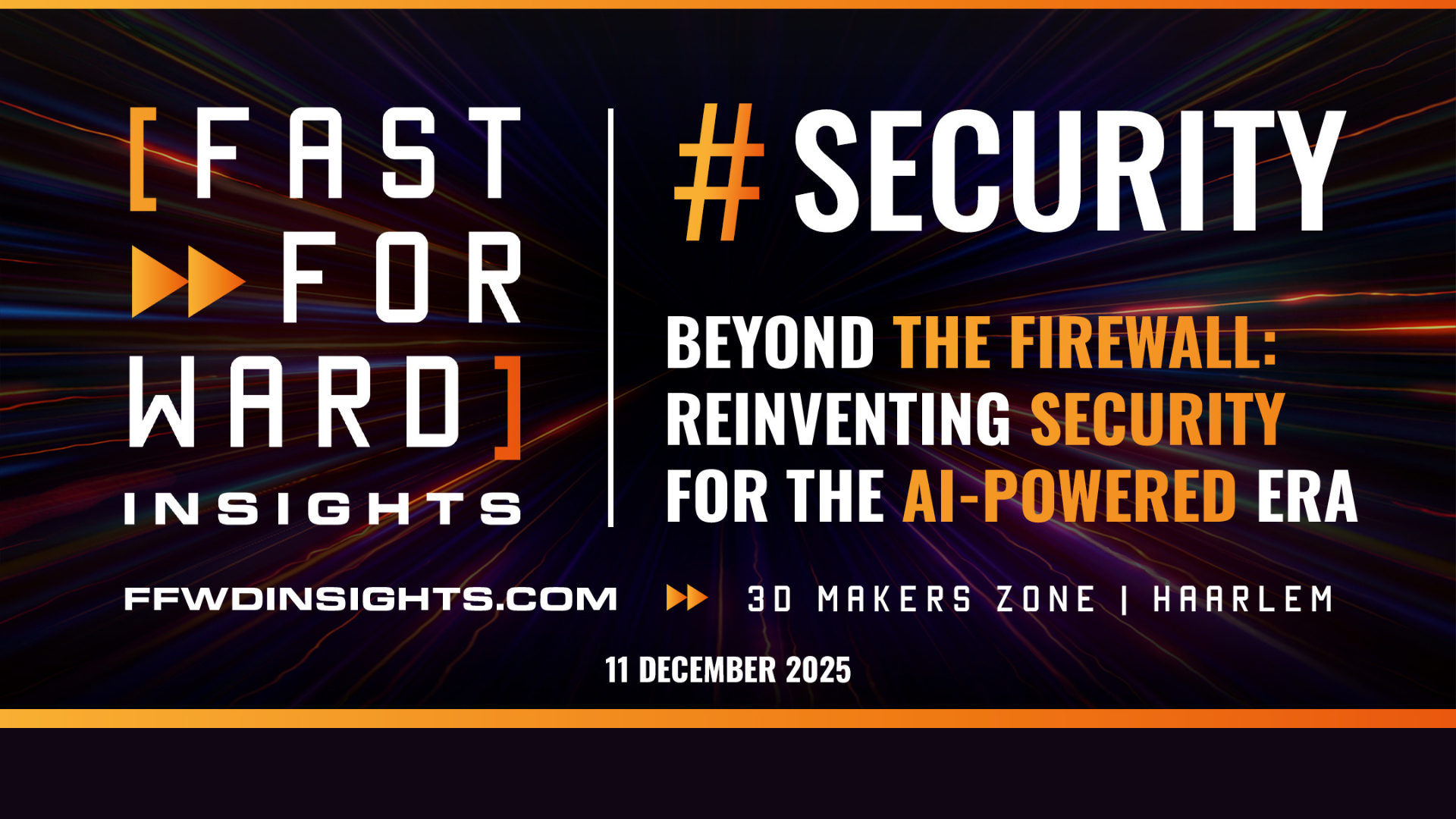
Netherlands Dec 11, 2025 Invitation Only Physical dutch
Navigating tommorrow's threatscape: Cybersecurity insights for digital leaders. Op 28 november in de 3D Makers Zone in Haarlem.
Read More.jpg)
Belgium Dec 4, 2025 Invitation Only Physical english
CIONET is committed to highlighting and celebrating female role models in IT, Tech & Digital, creating a leadership programme that empowers and elevates women within the tech industry. This initiative is dedicated to showcasing the achievements and successes of leading women, fostering an environment where female role models are recognised, and their contributions can ignite progress and inspire the next generation of women in IT.
Read More.png)
International Dec 9, 2025 Public Virtual english
The CIONET Awards 2026: Part 1, the premier celebration of excellence in digital mission and leadership. During this event the spotlight falls on two of the most critical arenas in modern enterprise: Applications & Architecture and Data & AI. Prepare for a dynamic session where each nominee will present their groundbreaking achievements.
Read More
Netherlands Dec 9, 2025 Invitation Only Physical english
Digital transformation and ongoing economic uncertainty are intensifying the pressure on IT leaders to do more with less. In this environment, gaining precise control over IT costs—while continuing to deliver effective, efficient, and innovative technology operations—is more critical than ever. At this exclusive CIONET Executive Roundtable, hosted in partnership with It’s Value, we will explore how Technology Business Management (TBM) principles can help CIOs and IT leaders make data-driven financial decisions that drive measurable business value. Key Discussion Themes Turning data insights into smarter IT investment decisions Setting priorities for cost optimisation and maximising ROI Quantifying and communicating the business value of IT initiatives Evaluating the principles of FinOps and the implications of public, private, and hybrid cloud environments for cost management Embedding effective change management to drive adoption and alignment Achieving tangible business outcomes from AI initiatives while maintaining fiscal discipline The evening will also feature a fireside chat with Sunil Anand, Global Head of Technology Business Management at National Grid. Sunil will share practical lessons and key milestones, retracing the National Grid cost management journey. This dinner offers a unique opportunity to: Exchange experiences with peers facing similar challenges Gain insights from TBM experts and industry practitioners Reassess your own IT financial strategy in a relaxed, collegial setting Join us for an evening of insight, discussion, and connection—designed to help you strengthen IT’s role as a true business value driver.
Read More.jpg)
Italy Dec 10, 2025 Invitation Only Physical italian
Questa roundtable esclusiva offrirà a CIO, CISO e Leader di ITOps/Engineering un confronto diretto per individuare le migliori strategie di Innovazione che, attraverso l'observability, ottimizzino il Return of Investment.
Read More.jpg)
Belgium Dec 11, 2025 Country Members Physical english
Imagine being able to monitor, simulate, and optimise an entire city, factory, or supply chain in real time. Next-generation digital twins are making this vision a reality, transforming how we manage and understand complex systems. By creating dynamic virtual replicas of physical assets and processes, digital twins allow organisations to predict issues, optimize performance, and make data-driven decisions with unprecedented accuracy.This event will explore how digital twins are being used across industries to revolutionize the way we operate and maintain large-scale, intricate systems—whether it’s the infrastructure of a smart city, the efficiency of a factory floor, or the resilience of global supply chains.Examples of Digital Twins in Action:Smart Cities: Urban planners can use digital twins to simulate traffic flow, monitor energy usage, or predict the impact of weather events on infrastructure. This enables cities to optimize resources and improve the quality of life for their citizens.Factories of the Future: Manufacturing plants are leveraging digital twins to monitor equipment in real time, prevent downtime, and optimize production lines. With predictive analytics, factories can avoid costly breakdowns and improve overall efficiency.Supply Chain Management: Complex supply chains, spanning continents and industries, can be modeled as digital twins to track shipments, simulate disruptions, and optimize logistics. Businesses can reduce inefficiencies and respond faster to market demands.Key Themes:Real-Time Monitoring and Simulation: How digital twins provide real-time insights into complex systems, allowing for dynamic response and optimization.Predictive Power: Leveraging AI and data analytics, digital twins help organisations predict and mitigate issues before they happen, from equipment failures to supply chain bottlenecks.Scalability Across Ecosystems: Digital twins aren’t limited to individual assets—learn how they can be scaled across entire ecosystems like smart cities or global supply chains for maximum impact.Building Trust and Security: With digital twins handling critical infrastructure and sensitive data, what are the security and governance frameworks needed to ensure trust in these virtual systems?Why You Should Attend:Next-generation digital twins are no longer just a concept—they are revolutionizing industries by offering a new way to manage complexity. Whether you’re looking to optimize a city, factory, or supply chain, this event will provide practical insights into how digital twins can transform your organisation’s operations and drive future innovation.
Read More
Netherlands Dec 11, 2025 Invitation Only Physical dutch
Navigating tommorrow's threatscape: Cybersecurity insights for digital leaders. Op 28 november in de 3D Makers Zone in Haarlem.
Read MoreEtat du Valais cuts time for digital services provision in 3
To cope with the pressure of more frequent releases, the ITOps shifted to a container approach, starting with Docker and eventually transitioning to Red Hat® OpenShift®. Discovering the Red Hat build of Quarkus and then adopting it has allowed developers to focus on delivering business value, increase test speeds, and cut development time by a 3rd.
The cantonal administration Etat du Valais serves the 345,000 inhabitants of the canton of
Valais in southwestern Switzerland. As digitization climbed its agenda, IT wanted to deliver more
value to the business faster. When more frequent releases put pressure on the IT operations
team, developers switched to a container approach, initially with Docker and later with Red Hat
OpenShift. Discovering the Red Hat build of Quarkus at the Red Hat Summit and subsequently
adopting it has allowed developers to focus on delivering business value and test faster,
cutting development to one 3rd.
Delivering advanced digital services for the citizens of Valais
Situated in southwestern Switzerland, the Valais is one of the 26 cantons forming the Swiss
Confederation. Its population of around 350,000 inhabitants lives across 67 square kilometers
of land, which includes Monte Rosa and Lake Geneva. Etat du Valais, the Valais’ cantonal
administration, has around 40 business units (departments), which cover everything from
finance and energy to security, institutions, and sport.
The cantonal administration is eager to provide its citizens with modern services to meet their
needs and, at the same time, offer the best value. With digitization high on its agenda, IT wanted to
provide value to the business faster. “Our development team adopted an Agile approach and began
delivering new functionality every couple of weeks,” said Steve Favez, Web Architect and Head
of Internet Capability Center at Etat du Valais. However, the more frequent releases put a lot of
pressure on the operations team.
Moving to using containers with Docker empowered the development team to deploy its
applications to production without relying on the operations team. “We started to have more
and more applications deployed on Docker and so began thinking about orchestrating all those
applications,” said Favez. “We moved to Red Hat OpenShift to give us better security and a better
ecosystem, further improving our ability to deliver more and more value to the business.”
Favez and his small team of ten saw that Red Hat OpenShift offered more opportunities to allow
them to deliver more value to the business—and cost-efficiency. “We realized we could save
CPU and memory resources and thus reduce costs by stopping some applications,” said Favez.
“We could switch off applications that are only used for a few months of the year and switch off
our testing and quality control environments if we had nothing under development.”
Restarting an application based on Spring Boot or even the legacy J2EE (Java 2 Enterprise Edition)
framework could take ten or even 20 seconds. This slow startup was wasting time, not only for the
operations team managing the applications but also for the development team updating them.
“When our developers came to test the new functionality they had just written, they were wasting
a lot of time waiting for their application to start running,” said Favez
Adopting a Kubernetes-native Java framework for containerized applications
Favez discovered the perfect solution while attending Red Hat Summit. Full of enthusiasm, on his
return, he presented the Red Hat build of Quarkus—part of Red Hat Application Foundations—to
his team. The Red Hat build of Quarkus is an open source, container-first, Kubernetes-native Java
framework that allows developers to optimize container-native applications. “The Red Hat build of
Quarkus had exactly the capabilities we needed,” said Favez. “It would give us elasticity. It would
allow us to switch applications on and off to save resources. And I wouldn’t need to teach my Java
developers a new language.”
To prove the concept, Favez wrote a small service to scan a file for viruses in just one day.
When he had previously written the service—a RESTful Web API—in Spring Boot, it took 1 week. “We’d
had some issues with the Spring Boot version,” said Favez. “It didn’t manage large files well.
But the Quarkus version worked perfectly.”
redhat.com Case study Etat du Valais cuts time for digital services provision in three 3
With the success of this first proof of concept, which went to production after 1 week, the team
started using the Red Hat build of Quarkus on larger projects. “The result was exactly the same,”
said Favez. “People developed faster. It was easy, and it worked. We now use the Red Hat build of
Quarkus for every new application we write. And we are migrating applications from legacy
frameworks to Quarkus when we have the time.”
Accelerating time-to-market while optimizing costs
Saved operational costs thanks to a smaller footprint
The Red Hat build of Quarkus allows developers to optimize container-native applications for peak
performance. Its small computing resource footprint ensures low memory and CPU consumption,
reducing overall costs.
“We’ve cut our application computing resource usage in three,” said Favez, “because the native mode
of Quarkus is so fast and so light.” In 1 instance, an application the team had written using Spring
Boot required 500 megabytes of memory—but just 50 megabytes with the Red Hat build of Quarkus.
In 2024, the team is planning to take advantage of Knative to become more elastic. Knative
eliminates provisioning and server management tasks, so developers can focus on building business
value. They will be able to create a service by packaging code as a container image and deploying
it on Red Hat OpenShift, and it will only run when its needed; Knative automatically starts and
stops instances. This will ensure computing resources aren’t consumed unless the code needs
to do something.
Existing Quarkus applications have been built in native mode, making them Knative-ready and easy
to deploy on the platform in the future.
Reduced cluster usage by 40%, making room for new workloads
With those applications having a significantly smaller footprint using the framework of Red Hat’s
build of Quarkus, operations can now run additional meaningful workloads on their existing Red Hat
OpenShift cluster. Spring Boot would require a cluster up to 40% larger than Red Hat’s build
of Quarkus.
“Quarkus has brought a big improvement to our Red Hat OpenShift cluster,” said Favez. “Operations
don’t have to add new nodes when we deploy more applications. We are deploying more and more
applications, and we are not using our entire cluster. We can continue to deliver things without having
to increase the size of our Red Hat OpenShift cluster.”
Increased developer productivity threefold
The fast startup times of Red Hat’s build of Quarkus’ have helped Etat du Valais significantly
reduce development time. “With Red Hat Quarkus, we’ve cut development time by three compared
to using our old J2EE server eight years ago,” said Favez. “Our developers can write their code faster,
and they can test it faster too.”
Developers no longer have to wait for their applications to restart each time they test it—they can
now code and test it straight away.
Favez also commented that developers can now focus on creating business value because
Red Hat’s build of Quarkus natively provides technical functionality. “Quarkus gives developers
the code needed to invoke a web service, for instance,” said Favez. “They can really focus on the
business functionality because they don’t have to write the low-level code.”
Ensured an easy transition from Spring and J2EE for Java developers
Switching from the Spring Boot and J2EE frameworks to Red Hat’s build of Quarkus was really easy
for Etat du Valais’ developers. “Red Hat Quarkus is still Java,” said Favez. “It uses a language that my
team was already familiar with. So, it was no big deal to move from J2EE or Spring Boot to Red Hat
Quarkus. It was really easy. There is nothing new for them.”
Despite not having any previous experience with Quarkus, Favez rewrote an API that had taken a
week to write in Spring Boot in just one day. “The documentation of Quarkus is just perfect and really
easy to understand. This API was working better than the one we wrote in Spring Boot,” said Favez.
“We had it in production within a week.”
Expanding success to business units and partners
Etat du Valais’ central development team is so happy with the Red Hat build of Quarkus that Favez
doesn’t need to mandate that they use it, even though he has stipulated that any new application will
be written using the Quarkus framework. He is instead encouraging developers within the business
units and third-party providers to use it.
“Not every provider is using Quarkus; most are still using Spring Boot or J2EE frameworks,”
said Favez. “We are telling them, ‘please use frameworks that use less memory. Quarkus is a good
solution.’ We say that we are really gaining a lot from it, and they will gain something too if they use
it to develop applications for us.”
In its effort to do more with less, the administration plans to also adopt Red Hat Ansible®
Automation
Platform for automatically provisioning and changing systems. “Automation with Ansible Automation
Platform will be really important for Etat du Valais,” said Favez.
With integration high on the agenda, the administration also has Red Hat AMQ Streams to its
roadmap. Red Hat AMQ streams is Red Hat’s implementation of the Apache Kafka project and, like
the Red Hat build of Quarkus, is part of Red Hat Application Foundations and includes the Apache
Camel and Camel on Quarkus integration frameworks, among other technologies for connecting
applications and data. “Red Hat has made it easy for us to install and use these important integration
tools on our Red Hat OpenShift clusters,” said Favez.
The open source solutions provided by Red Hat meet the many needs of today’s organizations: “
Red Hat really understands development and operational teams’ requirements,” said Favez.
“Doing more with less is a requirement for every team, every company. And Red Hat provides
all the tools that we need to do that, and they do it well.”
About Etat du Valais
The Valais cantonal administration (Etat du Valais) is 1 of the largest employers in Valais and offers
jobs in 40 different departments and in around 150 different professions. Every day, employees use
their diverse skills to help shape the high quality of life and the future of the canton.
296 Views 0 Likes Read More

Embark on a culinary journey through the ever-evolving world of digital leadership with our third edition of the CIONET Cookbook: Recipes for Digital Success. Unveiling the intricate trilemma faced by today’s Master Chefs, our trailblazing European CIOs address a challenge at the nexus of customer interests, digital transformation strategies, and IT modernisation. Their secret? Synchronising the gearing between customer, business, and technology to create a frictionless movement through the digital landscape.
The CIONET Cookbook uses the analogy of a five-star restaurant to explain the importance of optimally integrated technology, with the CIO as Master Chef. In order to provide the best service to its customers, a top restaurant must have the right atmosphere, an inviting menu, a well-equipped kitchen, talented and committed front-of-house and kitchen staff and smooth-running processes that ensure an enjoyable experience for diners.
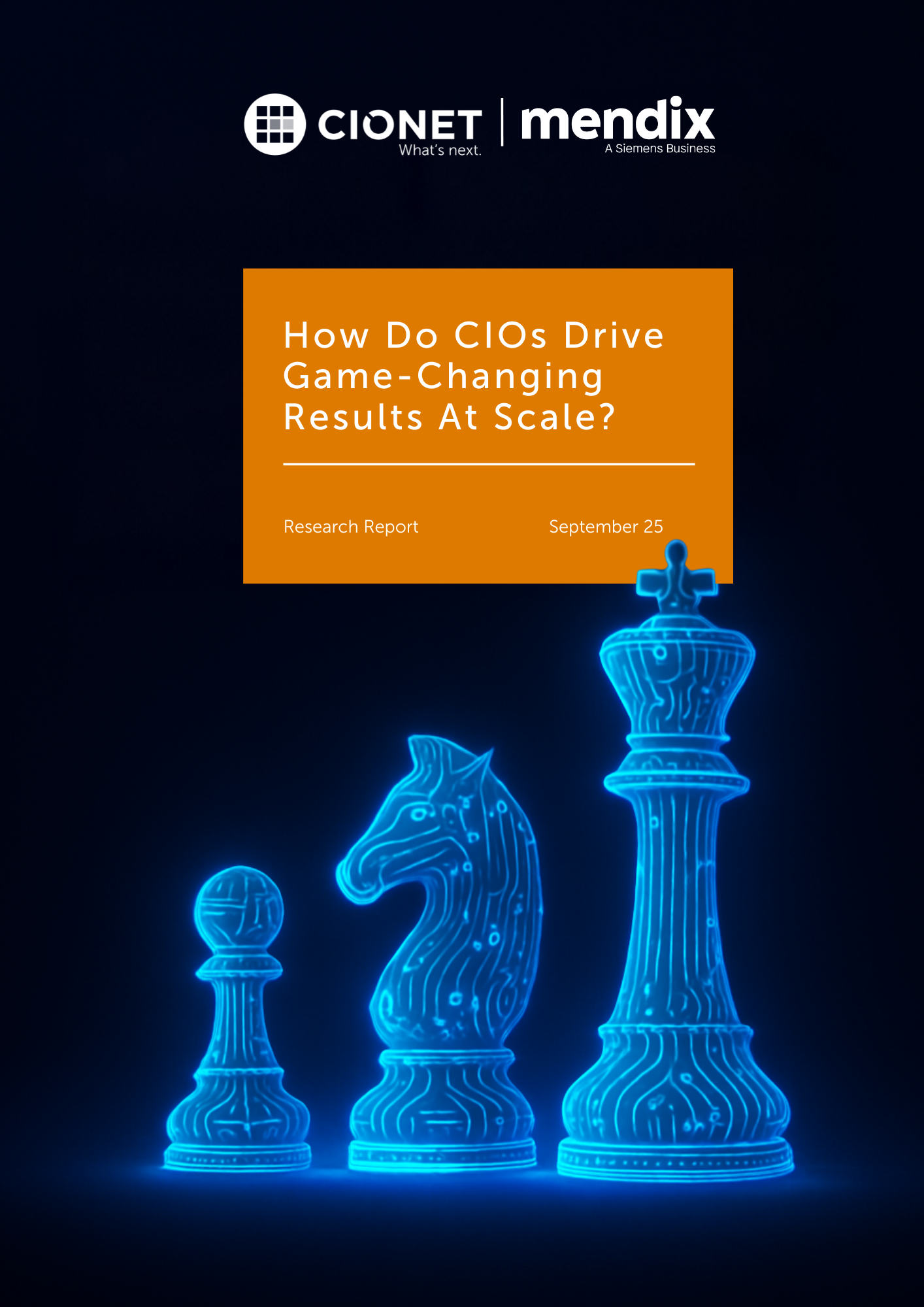
The role of the CIO has evolved from managing systems to shaping outcomes: growth, resilience, and competitive edge are now won or lost in the technology arena. Today ’ s CIOs must balance stability with innovation, control costs while attracting scarce talent, and modernise legacy infrastructure while adopting emerging technologies.

As AI transitions from a specialised tool to an all-pervasive force, understanding its profound implications for our human lives is no longer merely academic but an urgent imperative for social well-being and strategic preparedness.

Geopolitical tensions have dominated the headlines for over two years now. In this context, the cyber threat landscape is also evolving rapidly. The protection and security of critical infrastructure – both physical and digital – is becoming increasingly important.
In our new app, our members connect with other digital leaders from around the world to find better solutions to their challenges.
Connect with digital leaders like you
Share ideas, best practices, and new resources
Experience inspiring and thought-provoking content and conversations you can’t find anywhere else
Make better, more well-informed decisions about the topics that are most important to you
.png?width=600&height=600&name=Anna%20Kopp%20(1).png)
Head of IT Germany and Regional Office Lead Munich, Microsoft
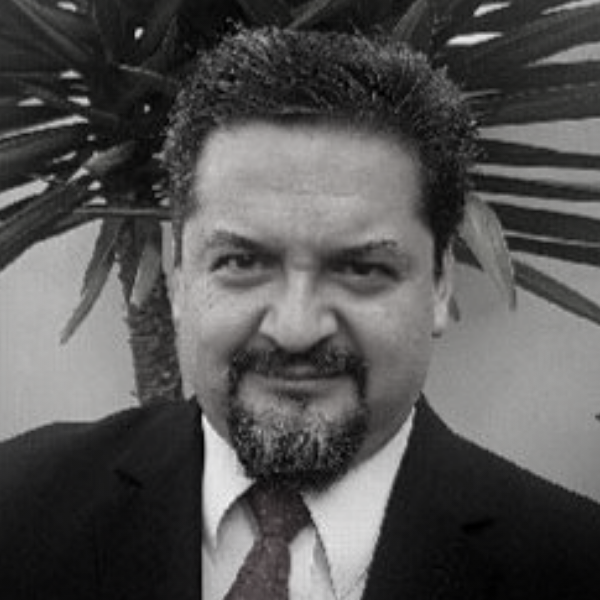
IT Director, IT Thinker

Vice president IT & Compliance, VisionaryRCM (A Carlyle Grp Company)
CIONET’s mission is to help IT executives become more at ease and above all more successful in their jobs. So they can do more than just keep up with change but ultimately define it. CIONET opens up a whole new universe of opportunities in IT management.
With the largest membership of corporate digital leaders across Europe, Latin America, US and Australia, CIONET has the expertise and pioneering vision to solve or address any IT management challenge.
From our local and global events, from our publications and research to our executive education programmes, everything we do is aimed at making sure digital leaders maximise their potential.
with digital leaders who share your interests, who face the same challenges, who care about the same topics.
stories, experiences, and ideas around our shared mission.
from our exclusive events, publications and research.
inspiration, thought-provoking conversations, expert perspectives and exclusive first-hand content each and every day
and make better, more well-informed decisions on how to lead your digital business.
your potential. Realise your ambitions.
You can either send us a registered handwritten letter explaining why you'd like to become a member or you can simply talk to us right here!
Would you like to know more about CIONET, membership or partnership opportunities? Do you have feedback or any other question? Send us a message!